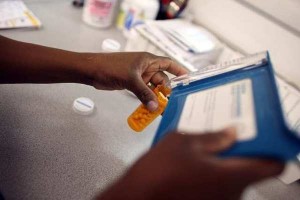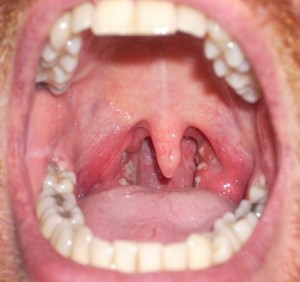In this day and age where HIV is thought of as more of a chronic disease than a fear of certain death, and adolescents are having sex at earlier ages and using less protection, sexually transmitted infections (STIs) are on the rise. There is a common misconception that every STI can be easily treated with antibiotics, so if you catch something from some random partner, no biggie, get some pills from your HCP and in 7-10 days you are good to go again. WRONG! Thinking like that has caused and overuse of antibiotics for STIs which has led to antibiotic resistant STIs and the most common one is gonorrhea, which also happens to be one of the more frequently transmitted STIs. There are 600,000 new cases of gonorrhea documented every single year in the US alone (per the Center for Disease Control and Prevention).
 Is gonorrhea harder to treat now?
Is gonorrhea harder to treat now?
So the Center for Disease Control and Prevention (CDC) has been tracking Neisseria gonorrhoeae since the mid 1980’s because it was an infection that was treated easily as it responded to many different antibiotic groups and regimens, unlike most bacteria. It was officially monitored in 1986 as the Gonnococcal Surveillance Isolate Project (GISP) to look at patterns of the infection, treatment responses, and to make recommendations for treatment. In 2010, the data that emerged was that 27.2% of all cases of gonorrhea in the US were resistant to one of the common treatment antibiotics: penicillin, tetracycline, and ciproflaxin. Another approximately 7% were resistant to all three antibiotics in combination. Now in 2012 the recommendations are for a combination of two different antibiotics to cover all of the bacteria; but w need to remember that along with antibiotic resistance in bacteria, humans also are becoming more allergic to antibiotics, so while we can can create antibiotic “cocktails” to kill off these bacteria as they become more resistant, the other challenge becomes what we are able to give to patients based on their allergies. It can become quite difficult to treat these bacteria. The big fear is the cephalosporin resistant gonorrhea, in which strains have been found in other countries but we have not had any documented cases in the US. We have very few, if any, currently FDA approved drugs to treat that strain, as cephalosporins are very powerful in treating gram positive and gram negative bacteria. There are drugs in other countries that are used to treat this strain, but they have not been proven safe or effective by the US FDA.
Is it Rampant?
Various strains of antibiotic resistant gonorrhea are found readily throughout the US and worldwide, and at this point we still have antibiotic combinations that we can use to treat the bacteria. The big fear by HCPs is that the more resistant strains will be brought from other countries and into ours, thus spreading further, and we do not have adequate drugs to treat this strain. It is a bigger and bigger threat the more these gonorrhea infections keep spreading.
What are the symptoms of gonorrhea?
It can be a silent infection, usually affecting women’s cervix and if left untreated then moving into the uterus and fallopian tubes, which can lead to infertility. Some other symptoms for women are:
-abnormal bleeding
-burning when urinating
-heavy vaginal discharge (may have a strong odor)
-general irritation of the outside of the vagina
Again, for men the symptoms may be silent, and are usually only visible in approximately 20% of cases. For men, symptoms include:
-discharge from the tip of the penis
-frequent urination with blood present
-a burning sensation with urination
-a swelling of the glands in the groin
-the tip of the penis may turn bright red
*If the symptoms are in the rectum or throat, pain, swelling, and discharge most often occur.
What can I do to prevent it?
To prevent getting these strains of gonorrhea, you need to protect yourself from getting any STI:
-Abstain from sex
-Practice safe sex, use condoms (and/or other barrier methods) with vaginal, anal, and oral sex.
-Only have sexual intercourse in a monogamous relationship
Also, get tested regularly for STIs and encourage your partner(s) to do the same. You need to look out for yourself and protect yourself. No one is worth doing permanent harm to your body and reproductive organs, right? So look out for yourself, and empower yourself by getting frequently tested, and encourage others to do the same, along with practice safe sex. Talk to your HCP about your risk, how often you should get tested, and if you are allergic to antibiotics, what your treatment options are. So be safe and stay clean!
Yours in Good Health
B

